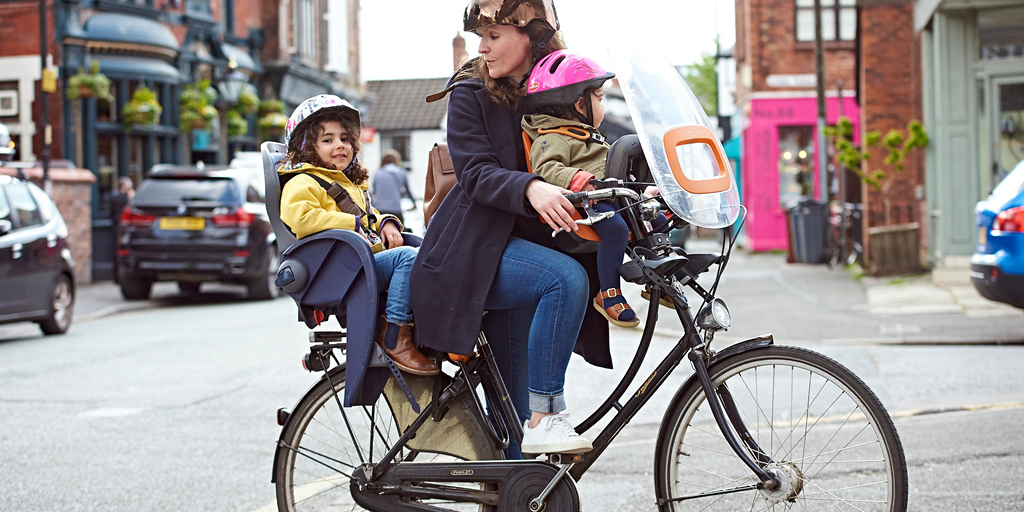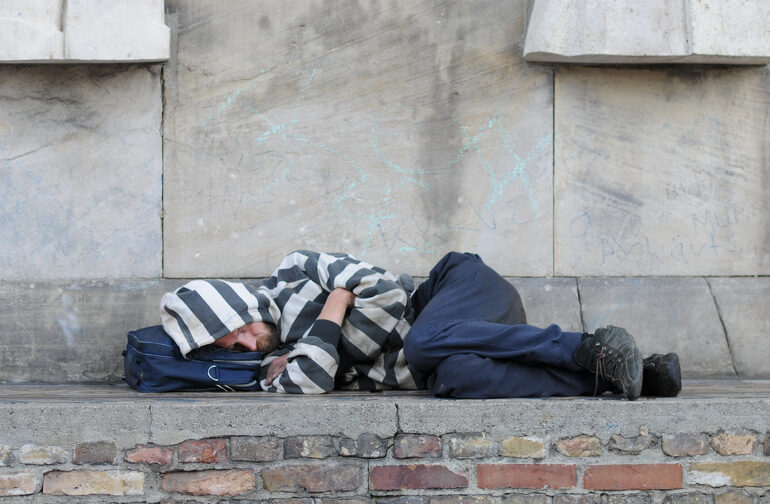On Friday, Manchester City Council announced on Twitter it will not be bidding for pop-up cycle provision as part of a GMCA bid for £16 million from government.
City centre resident, Sarah Mann, explains why she’s disappointed about the decision and what we stand to lose if we don’t have a regionally joined-up ‘pop-up’ cycle network post-lockdown.
Manchester City Council (MCC) recently revealed on its official Twitter account that it won’t be applying for ‘pop-up‘ cycling infrastructure, despite statutory guidance and funding from government. As a resident who is desperate to cycle in Manchester, I’m gutted. Without continuous cycle lanes across Greater Manchester boroughs, I’ll be forced to either take public transport or buy a car when lockdown ends.
This is a shame especially because councils like Trafford, Salford, Stockport and Tameside are already building their part of a regional pop-up network proposed by the Greater Manchester Combined Authority (GMCA). However, it won’t take off if MCC doesn’t play its part – as Andrew Gwynne, MP for Denton and Reddish, has already pointed out.
Like Gwynne and many others including other MP’s, councillors, and residents, I’m shocked by MCC’s decision. I feel especially aggrieved as someone who was forced to rethink commuting by bike after moving to Manchester and understands what difference those pop-up lanes would make.

I began cycling in London when I moved there in my early twenties and got an entry-level media job. Because the cost of living is so high, I could hardly afford bus fares so travelling by bike became a lifeline. The infrastructure wasn’t perfect, but there was enough of it, and enough people riding alongside me, that I felt safe for the most part.
After a decade, I accepted a job in Manchester and moved back north. Although I was nervous about the move, I was excited about cycling. Manchester is relatively flat, has wide roads, access to miles of beautiful countryside, and an internationally renowned velodrome. I couldn’t wait to explore my new surroundings with my two-wheeled companion.
I quickly settled into my new home and discovered the city’s wealth of cultural and social opportunities. But I was surprised how difficult it was to move around by bike.
Aside from the well-publicised Oxford Road corridor, the city barely had any decent cycling infrastructure. I felt threatened by fast-passing cars who weren’t used to cyclists on the road. In London I’d commuted year-round, but despite wearing extensive high vis, I found drivers regularly pulled out in front of or across me. With few other cyclists around and without infrastructure to protect me, I began to lose my confidence.
Finally, when a new employer offered me a free car parking space but no bicycle storage or changing facilities, I was forced to accept this city doesn’t want people cycling. I reluctantly joined the queue lining up for the tram.
Then the pandemic hit and my bike became a lifeline again. I used my exercise time to explore the beautiful green spaces outside the city centre. It gave me some clarity in all the madness, and I started regaining the fitness I’d lost due to my sedentary commute.
Things changed around me too. With traffic reduced to 1950’s levels, cycling has boomed. It’s not unusual now to see families and older people on bikes – a very rare sight pre-pandemic. And, for the first time, I could breathe the city centre air without tasting it.
Since then talk of a new normal has taken hold. To maintain social distancing, public transport capacity will fall by as much as 90%. I don’t know how our cities can cope with the congestion and pollution that would result if all these people start driving. Moreover, affording a car just isn’t an option for many. For this reason, politicians around the world have turned to the humble bicycle as part of the post-lockdown recovery.
Paris, Milan, New York and Bogota unveiled plans for hundreds of kilometres of post-lockdown cycleways. Here in the UK, the government issued statutory guidance instructing local authorities to build pop-up walking and cycling infrastructure and provided funding, beginning with £250 million for immediate measures that could be ‘swiftly’ and ‘meaningfully’ created.
Off the back of that, Birmingham, Liverpool, Leeds and Glasgow have already revealed ambitious plans to reduce car dependency. So has London – I’ve watched enviously as Mayor Sadiq Khan announced a huge shift in space for active travel in my former home.
For several years Manchester has talked about exciting long-term plans for a regional ‘Bee Network’ of permanent walking and cycling routes. But in the four years I’ve lived here I haven’t seen much beyond talk. With the government earmarking an initial £16 million for Greater Manchester, I hoped the funding would help speed up those plans.
At first my hopes seemed to bear out. Trafford began installing an extensive temporary network. I took a test ride and had the most stress-free cycle I’ve ever had there. Stockport, Tameside, and Salford (always the best part of my former cycle commute) quickly developed pop-up infrastructure too. It seemed the Greater Manchester boroughs were working together to make commuting into the city by bike a safe and viable option. Except for the final and vital piece of the jigsaw – Manchester.
Other than a largely well-received closure of a small stretch of Deansgate, MCC – at the heart of the UK’s often-called ‘second city’ – was eerily quiet. I’d been waiting with bated breath for MCC to reveal the plans that would position us alongside other global cities. Last Friday, my hopes were dashed.
MCC tweeted from its official Twitter account that it will not be applying for pop-up cycle infrastructure. The next day Cllr Angeliki Stogia, Executive Member for Environment, Planning and Transport, explained on Twitter that the Council are still committed to improving cycling provision in the long term. However, she questioned the safety of temporary measures – despite cities around the world successfully adopting them months ago. She also argued there is a lack of sufficient demand for temporary measures – despite the current cycle boom.
Without pop-up cycle lanes, many of us who travel through Manchester will soon need to make a decision. Do we try to navigate busier streets by bike despite feeling unsafe, or do we nervously add to the numbers on public transport? Or, in my case, after a lifetime of not needing or wanting a car, will I be forced into the financial and environmental burden of owning one?
Cycling in the UK often has the reputation of being predominantly pursued by middle-aged men in lycra and for good reason. In my experience (and research bears this out), if there is no infrastructure, it’s only the very confident who will ever feel comfortable doing it. If, even after a decade of cycling in the capital, I was scared off braving the rush hour battle here, no wonder few other people manage it.
I desperately hope Manchester City Council will reconsider. A temporary structure may only be a start, but if the start isn’t now, then when?
By Sarah Mann



KeithT says
If the mess at the junction of the M60 and Chester Rd is part of a pop up cycle lane together with the disjointed sections beyond is anything to go by then they are are potential disaster waiting for cyclists and drivers. The ones which appear unsigned as vehicles exit the westbound slip road and turn right changes from 3 to 2 lane at a right angled turn with no prior warning whatsoever.
Crass and not thought through, as ever. Most of this “design” is purely the spending of allocated moneies without proper thought or design.
BTW I am a cyclist.
James Grant says
Good article, and MCC needs to have a major rethink of their strategy. They can’t even manage 300 metres worth of traffic cones to link the end of the Trafford pop-up lane to the start of the existing segregated cycle path on the A56.